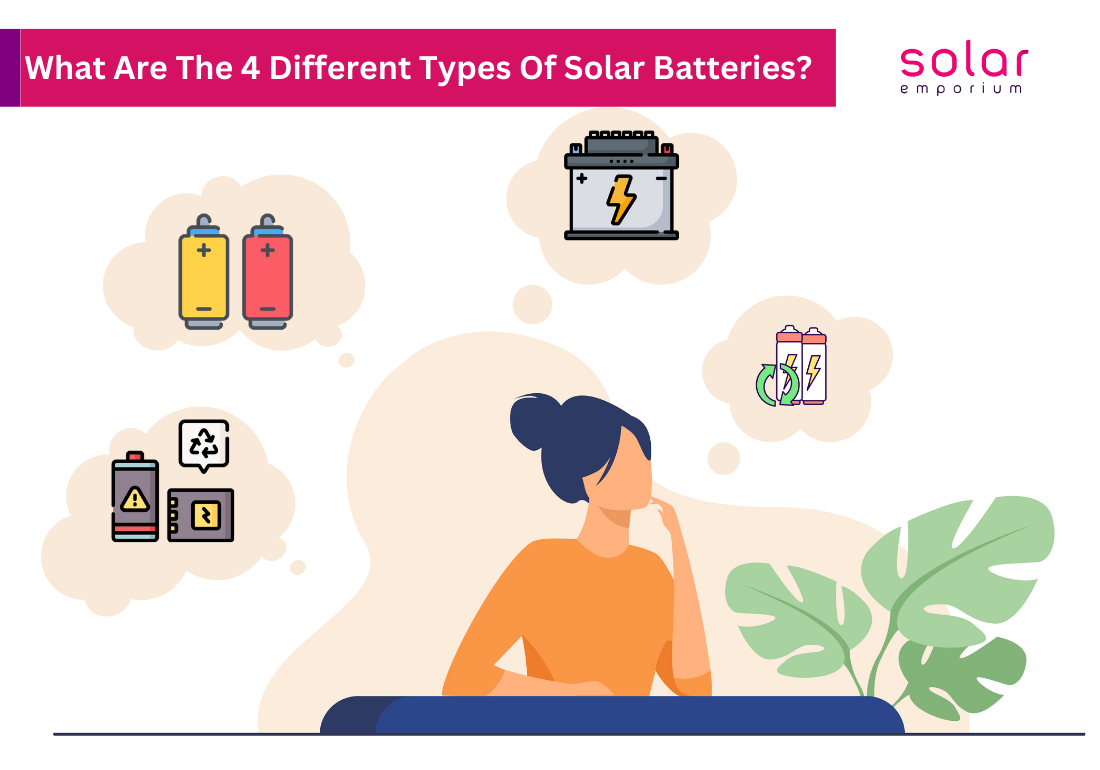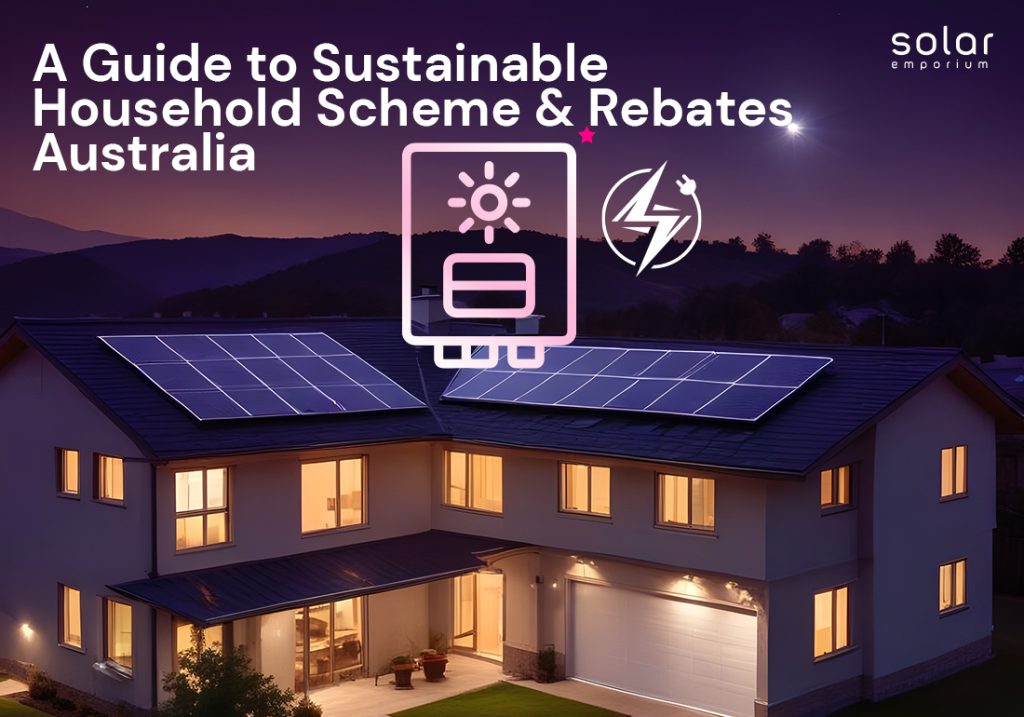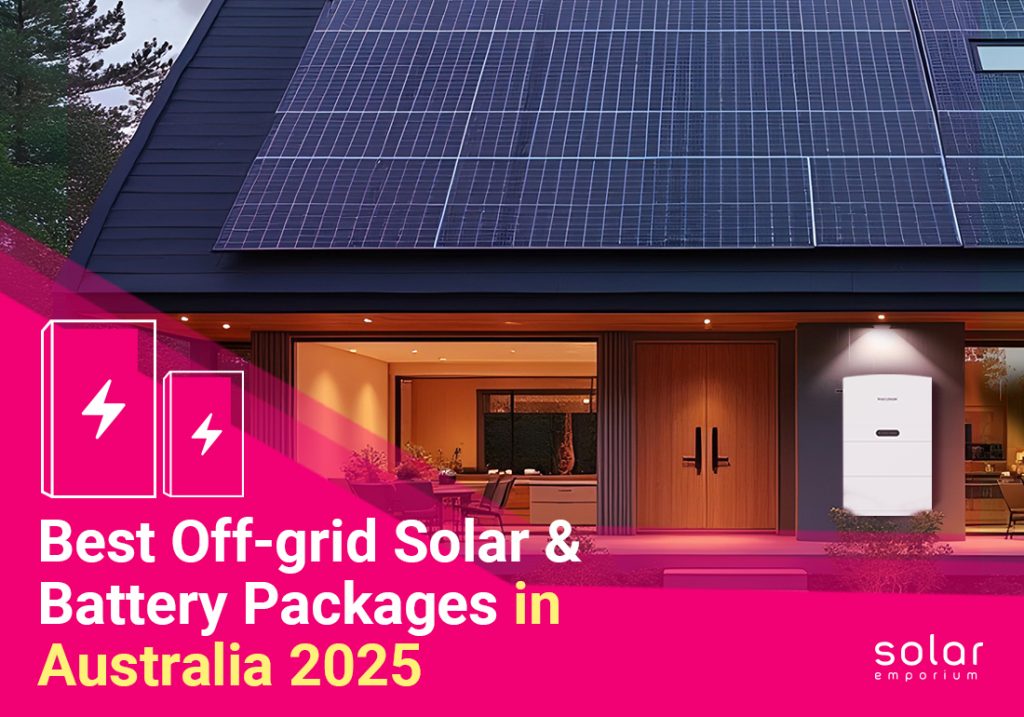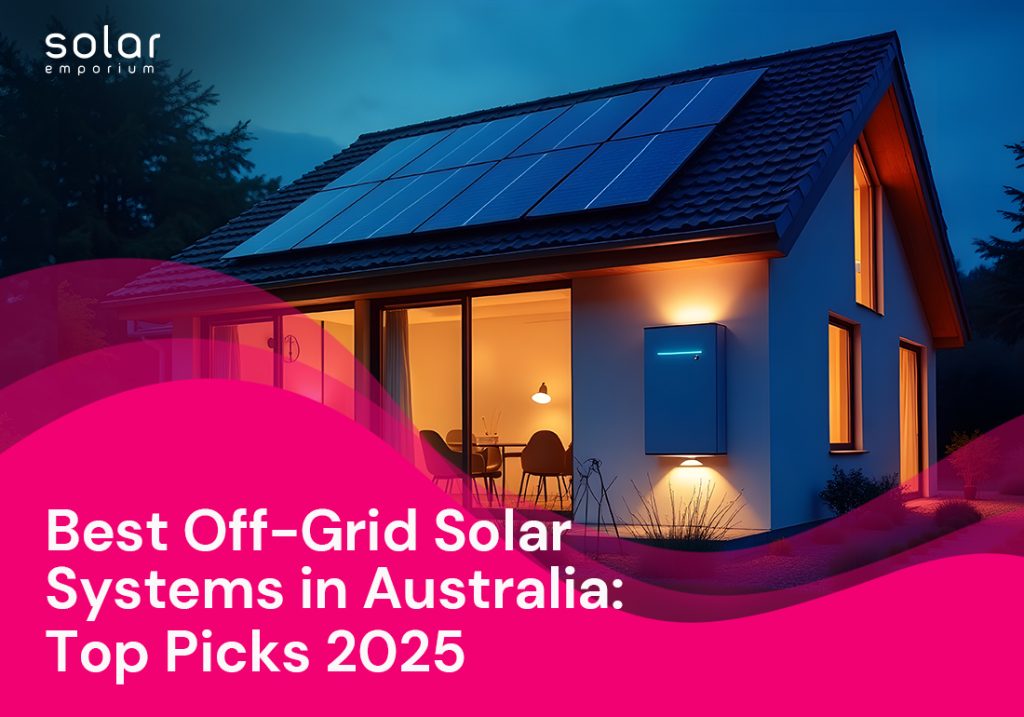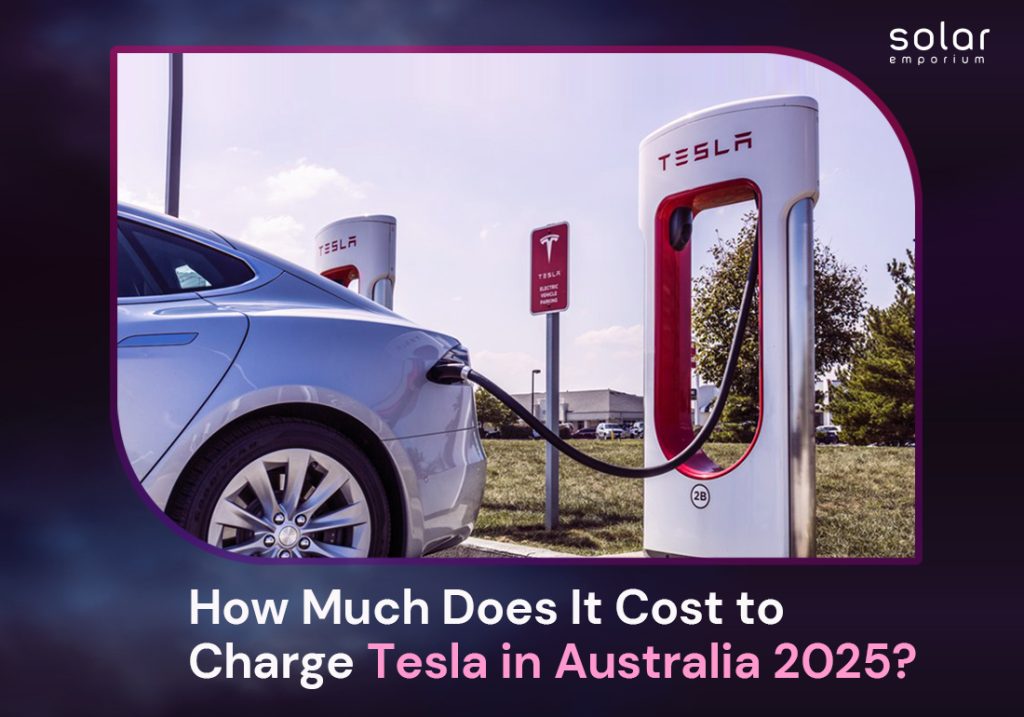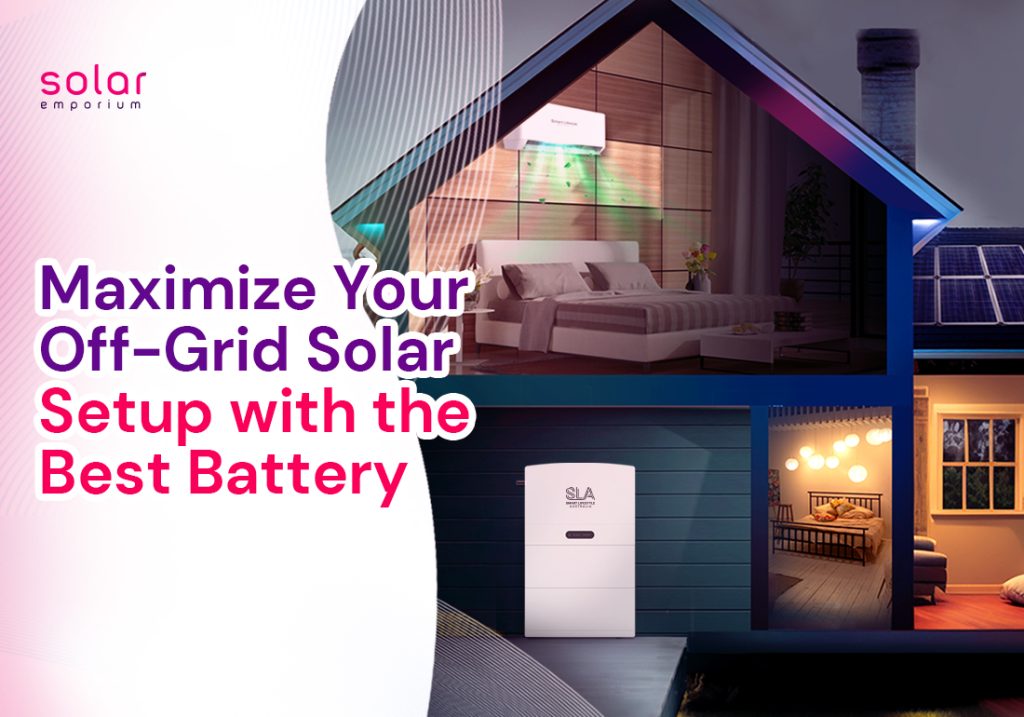Before getting a solar battery, you need to know the different types of solar batteries and their specifications. There are 4 different types of solar batteries available for you.
Let’s get a background of solar batteries first!
In summary, solar batteries store excess energy produced by solar panels. When energy output is low, you may use the excess energy to power your home. For example, you can use the sun’s energy on cloudy and rainy days or even after sunset.
Using solar plus storage depends on various reasons like climate and topography to culture and way of life. Most people in Australia work during the day. Therefore, automatically they consume less energy during the daytime.
But that’s when solar panels collect most sunlight to convert it to electricity. And that’s what demands the development of storage technology.
Differences Between Solar Batteries and Regular Batteries
Solar batteries are specifically built to store and release renewable energy on demand. They are made with different materials than ordinary batteries to handle the slower charge/discharge rates associated with dependable solar energy sources.
Traditional batteries have limited energy stored in a single cell, making speedy charging difficult. Solar batteries, on the other hand, have two or more cells and may provide electricity for a much longer period.
Solar batteries can also be lead-acid, nickel-cadmium, or lithium-ion. Instead of a standard battery, a solar system will provide more energy over time and not leak heavy metals into the environment after completing its life cycle.
Solar Battery Types

Four primary types of batteries are used to store electricity from solar power systems. The following section summarizes commercially available technologies and information on each type.
Lithium-ion Batteries
Maintenance of Lithium-ion batteries is relatively easy. These batteries have higher energy density than other batteries. That’s how they can store more energy in a smaller space. Li-ion batteries also have a longer life cycle. Most of the batteries are guaranteed at least ten years.
However, one of the most significant downsides of lithium-ion batteries is their higher cost than other energy storage technologies.
Furthermore, because of their chemistry, lithium-ion storage systems are more likely to catch fire due to a phenomenon known as thermal runaway.
Although, if properly fitted, the chances of your battery catching fire are almost zero.
Lithium-ion batteries are ideal for residential solar installations because they can store more energy in a smaller space and allow you to utilise more of the stored energy.
Nickel-cadmium (Ni-Cd) Batteries
Nickel-cadmium (Ni-Cd) batteries are less popular than lead acid or lithium-ion batteries.
These batteries first came into the market in the late 1800s. After the remodelling in the 1980s, they considerably boosted the energy they could store. Ni-Cd batteries are the most popular in the aircraft industry.
The fundamental advantage of Ni-Cd batteries is their long life. They are also capable of operating at high temperatures. Furthermore, they are almost maintenance-free and do not require complex battery management systems.
But Ni-Cd batteries are exceedingly poisonous because of cadmium. Consequently, cadmium use is prohibited in various countries. They are also vulnerable to the memory effect, which reduces their ability to keep a charge.
But because of their endurance, Ni-Cd batteries are useful for large-scale applications such as utility solar energy storage.
Flow Batteries
Flow batteries are a new technology in the energy storage industry. They contain a water-based electrolyte liquid between the battery’s two chambers or tanks.
When charged, chemical reactions occur, allowing the energy to be stored. These batteries are becoming increasingly popular.
Because of their larger size, they are more expensive than other batteries. The cost and size make it difficult for household use.
One of the best features of flow batteries is their 100% depth of discharge. This means you can use all the energy in the battery without damaging its mechanism.
Unfortunately, these are far more expensive than other types of batteries. They also have an insufficient storage capacity compared to other battery systems.
Flow batteries serve better in large-scale systems. Because of how they work, they must be huge enough to hold any significant quantity of energy.
Lead Acid Batteries
Lead acid batteries are the most tested and reliable technology in the solar battery industry. These deep-cycle batteries date back to the 1800s. And they’ve been able to stay because of their dependability.
These batteries have been classified as flooded batteries and sealed batteries. Lead acid batteries are the least expensive energy storage, making them the most cost-effective. They are also trustworthy because of the long industry journey.
To function correctly, flooded lead acid batteries require ventilation and maintenance. That increases the likelihood of the battery leaking. Also, their low depth of discharge (DoD) results in more frequent charging.
They have a lifespan between 5 and 10 years because of their modest depth of discharge. Lead-acid batteries are ideal for off-grid solar systems and backup storage for a power outage.
How to Choose the Best Solar Battery Type for You
The two main distinctions are the battery’s chemistry and whether it is AC or DC-coupled. Which battery is best depends on when you plan to install it, how frequently you plan to use it, and how much space you have.
A lithium-ion battery is usually the best option for a residential solar installation. They can store more energy in less space, discharge most stored energy, and have high efficiency.
Furthermore, because these are the most popular, many solar businesses can precisely and safely install a Li-ion solar battery.
If you are on a tight budget, lead-acid batteries may be the ideal alternative. They have been used for decades and are cheap.
Call Solar Emporium as your trusted solar contractor to determine which solar battery best matches your needs. Get a Free Quote Today!
Costs of Solar Batteries

The type and size of the battery selected determine the cost of a solar battery or battery system. Lead-acid batteries have a lower initial price to the consumer than lithium-ion batteries.
However, investing in a lithium-ion battery may save money in the long run, depending on how the batteries are used.
Check out Solar Emporium’s lucrative solar storage packages!
Depending on size and power, a single lead-acid battery can cost between $200 and $800. Although to keep a household fully powered, it may require multiple lead-acid batteries.
On the other hand, a household lithium-ion solar battery system with installation costs between $7,000 and $14,000.
Nickel-cadmium and flow battery prices vary depending on the size and scale of the installation. Because of the expense, durability, size, and stability in extreme temperatures, they are sometimes utilised in residential houses. But these are better suited for commercial and industrial environments.
